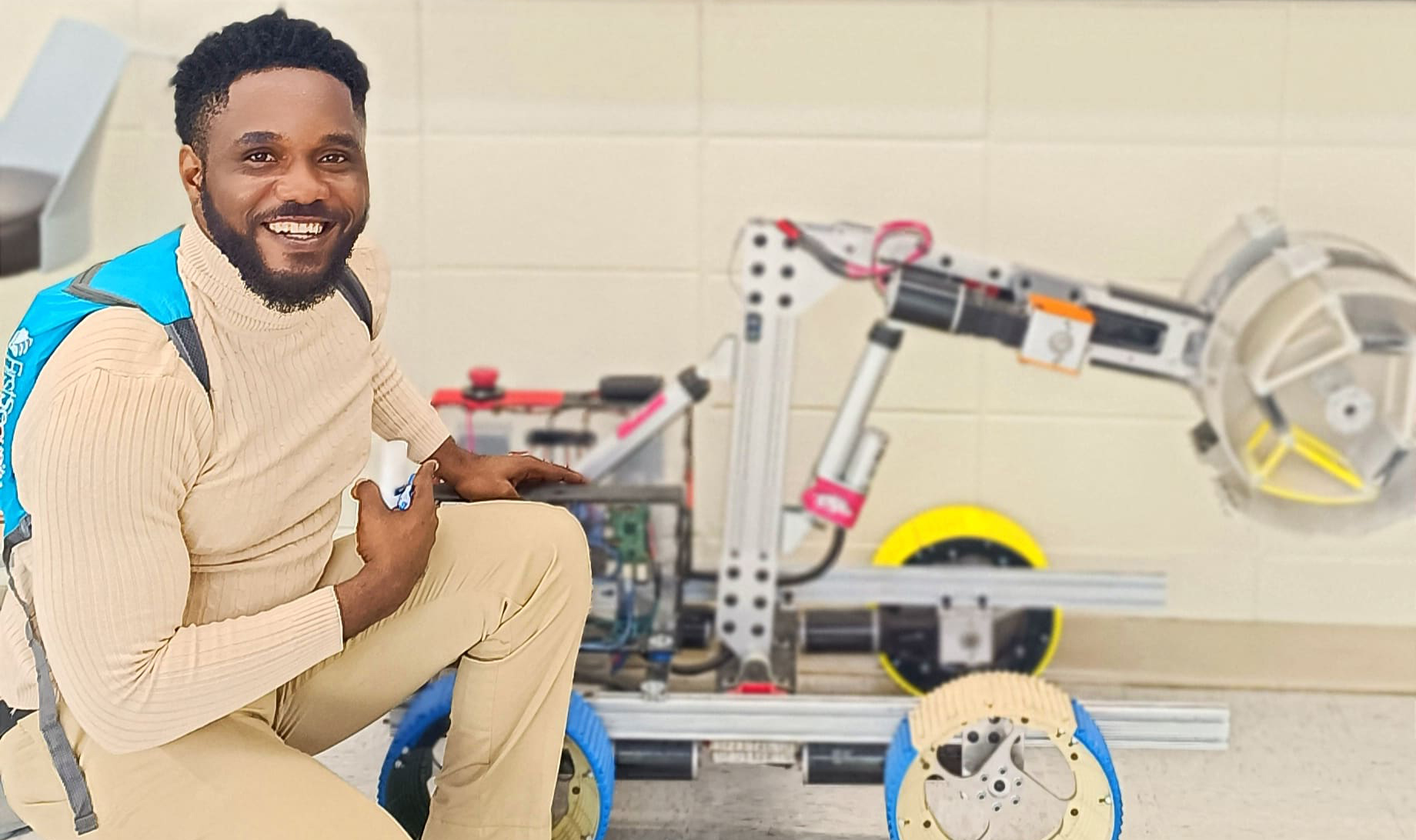1. Introduction to Quantitative Research Design
When planning a quantitative study, one of the very first decisions you need to make is your research design. Simply put:
Research design is the blueprint that guides how you will collect, measure, and analyze data so that you can answer your research questions in a clear, methodical, and valid way.
Think of it like planning for a trip. You want to know:
- Where you’re going (your research question),
- How you’ll get there (your methodology and data collection methods),
- What resources you’ll need (your participants, instruments, tools), and
- How long it will take.
A clear, well-thought-out design helps ensure your study:
- Remains consistent (reliable),
- Truly measures what it’s supposed to measure (validity),
- Is logically aligned from start to finish.
In quantitative research, there are four primary research designs:
- Descriptive
- Correlational
- Experimental
- Quasi-Experimental
We’ll look at each in detail, with layperson-friendly examples. After reading this guide, you’ll be able to choose which design is right for your study and understand how to apply it.
2. Descriptive Research Design
2.1 What Is Descriptive Research?
Descriptive research focuses on describing or documenting existing phenomena, conditions, or characteristics of a group. It does not explore relationships between variables or delve into cause-effect dynamics; instead, it answers the “who, what, when, where, and how” of a situation.
2.2 When Should You Use Descriptive Research?
- When you want to understand the current status of a phenomenon or issue.
- When you want to identify basic patterns or features in a population.
- When no prior research has been done on the topic, and you need a foundational understanding.
2.3 Examples in Everyday Language
- Smartphone Addiction Among Adolescents:
You might design a survey to measure how many hours teens spend on their phones and whether they experience negative impacts (like trouble sleeping). The results would describe how common the issue is and the basic characteristics of the group affected—without looking into cause-effect relationships. - Customer Satisfaction for a Coffee Shop:
You could collect customer feedback (for instance, via a short questionnaire at checkout or an online form). You’d then describe the average satisfaction level, the most common complaints, and general trends.
2.4 Strengths and Limitations
- Strengths
- Provides a snapshot of a situation or phenomenon.
- Often easy and quick to carry out (e.g., surveys, observations).
- Useful as a precursor to more in-depth research.
- Limitations
- No cause-effect claims can be made.
- Focuses on “what is” rather than “why it is.”
- Doesn’t explore relationships between variables.
3. Correlational Research Design
3.1 What Is Correlational Research?
Correlational research investigates whether and how two or more variables are related. You observe, measure, and record existing variables without manipulating them. Then you use statistical methods (like Pearson’s correlation) to see if there’s a relationship (positive, negative, or none at all).
3.2 When Should You Use Correlational Research?
- You want to explore potential associations without establishing cause-effect.
- You face ethical or practical constraints that prevent manipulating variables.
- You’re looking for initial clues about possible relationships to study later in an experiment.
3.3 Examples in Everyday Language
- Exercise Frequency and Health Indicators:
You could gather data on how often people exercise each week and compare that to their blood pressure and heart rate measurements. The result might show a positive correlation (i.e., the more exercise, the better the health markers) but it cannot confirm that exercise causes better health—there might be other variables at play (like diet, genetics, sleep). - Screen Time and Academic Performance:
You might record how many hours students spend on computers/phones and compare that with their GPA. A correlation could emerge—maybe longer screen time is linked to lower GPA. But you cannot conclude that screen time causes lower grades because other factors (like personal motivation, internet connectivity for study, etc.) could influence the results.
3.4 Strengths and Limitations
- Strengths
- Identifies possible relationships that can guide future research.
- Often simpler and less resource-intensive than experiments.
- Suitable for large samples and when manipulation of variables is impossible or unethical.
- Limitations
- Cannot establish causation (“correlation ≠ causation”).
- There could be confounding variables creating an observed relationship.
- Relying on observational data can sometimes introduce self-report biases (e.g., if you use surveys).
4. Experimental Research Design
4.1 What Is Experimental Research?
Experimental research seeks to test for causality—determining whether one variable (the independent variable) influences or causes change in another variable (the dependent variable). This design typically involves:
- Random assignment of participants to groups (e.g., treatment vs. control).
- Manipulation of the independent variable in the treatment group.
- Measurement and comparison of outcomes across these groups.
4.2 When Should You Use Experimental Research?
- You want strong evidence of cause-effect.
- It’s ethical and feasible to manipulate the independent variable.
- You can control many potential confounding factors in a controlled environment.
4.3 Examples in Everyday Language
- Testing a New Fertilizer:
Give Group A a specific fertilizer, Group B a different fertilizer, and Group C no fertilizer. All else (light, water, temperature) remains the same. By comparing plant growth across groups, you can see which fertilizer causes the most growth. - Testing a New Teaching Method:
Randomly assign students to either a new teaching method (treatment) or the traditional method (control). If the two groups were otherwise similar beforehand, any post-study difference in test scores could be attributed to the new method.
4.4 Key Considerations
- Random Assignment vs. Random Sampling
- Random assignment: Participants (already in your study) are assigned to treatment/control groups in a random way—helps with internal validity (confidence that your results are caused by the treatment).
- Random sampling: How you select your participants from the broader population—helps with external validity (generalizability to the larger population).
- Ethical Constraints
- Sometimes you cannot ethically withhold a potentially beneficial treatment from a control group.
- In medical or psychological studies, you must ensure no participant is harmed by withholding standard care.
- Control of Confounding Variables
- The researcher attempts to eliminate or reduce the impact of other variables that might influence the outcome.
- A well-controlled experiment will help you make strong cause-effect inferences.
4.5 Strengths and Limitations
- Strengths
- Gold standard for testing causality.
- Random assignment reduces bias and confounding variables.
- High internal validity.
- Limitations
- Can be expensive and time-consuming (especially in lab settings).
- May be ethically or practically unfeasible for certain variables.
- Strict control over variables can create an artificial setting, reducing external validity.
5. Quasi-Experimental Research Design
5.1 What Is Quasi-Experimental Research?
Quasi-experimental research resembles an experimental design in that it aims to test for causal relationships, but it does not rely on random assignment to conditions. Researchers use existing groups (e.g., particular classrooms, intact communities, or preexisting organizational departments).
5.2 When Should You Use Quasi-Experimental Research?
- Random assignment is impossible, unethical, or impractical (e.g., you can’t shuffle students between different schools just for a study).
- You still want to investigate cause-effect but with fewer constraints on group formation.
- You have access to large-scale natural settings (like entire schools, hospitals, or companies).
5.3 Examples in Everyday Language
- Studying a New Teaching Method Across Different Schools:
Suppose School A has independently decided to adopt a new technology-based teaching method. School B continues with the traditional approach. You can compare students’ performance across these two “naturally” formed groups. You didn’t assign them randomly, but you can still glean insights about potential effects of the new method. - Examining Workplace Wellness Programs:
A company’s HR department initiates a wellness program in Division X but not in Division Y. As a researcher, you study the results in both divisions to see if the wellness program caused any improvements. Though participants aren’t randomly assigned, the design still aims to assess the program’s causal impact.
5.4 Strengths and Limitations
- Strengths
- Useful for real-world settings where random assignment isn’t possible.
- Often permits larger-scale research, increasing statistical power.
- Can still provide good evidence of causality (but not as strong as a true experiment).
- Limitations
- Potentially more confounding variables—differences between the groups might influence results.
- Harder to claim a firm cause-effect relationship because of lack of random assignment.
- Must carefully account for pre-existing differences between groups (age, skill level, resources, etc.).
6. Additional Considerations for Quantitative Research
Regardless of which design you choose—descriptive, correlational, experimental, or quasi-experimental—there are some general factors to keep in mind:
6.1 Reliability and Validity
- Reliability: The consistency of your measurement tool or method. If you run the study again under similar conditions, you should get similar results.
- Validity: Are you measuring what you claim to measure? There are different types of validity:
- Internal Validity: Confidence that changes in your dependent variable truly come from your independent variable (especially important for experimental designs).
- External Validity: How well your findings generalize to larger populations or real-life contexts.
- Construct Validity: How well your chosen measures capture the concept you’re studying (e.g., does your “stress scale” truly measure stress?).
6.2 Sampling Approaches
- Probability (Random) Sampling: Every member of the population has an equal chance of being included. This supports external validity.
- Non-Probability Sampling: Convenience, purposive, or snowball sampling. Often used when population details are unavailable or random selection is not feasible.
6.3 Data Collection Methods
- Surveys/Questionnaires: Commonly used in descriptive and correlational studies.
- Experiments/Lab Studies: Standard in experimental research.
- Observations: Can be part of descriptive or quasi-experimental designs.
- Secondary Data: Using existing datasets (e.g., government records, hospital data). Useful for both descriptive and correlational studies, and sometimes quasi-experimental setups (if the data includes natural “treatments”).
6.4 Ethical Considerations
- Informed Consent: Participants must know what they’re agreeing to.
- Protection from Harm: Ensure participants aren’t put at risk physically, psychologically, or otherwise.
- Privacy and Confidentiality: Safeguard personal data.
- Approval: Most institutions require that you get your research plan approved by an ethics board (e.g., Institutional Review Board or IRB).
6.5 Data Analysis Approaches
- Descriptive Statistics: Used in all designs for summarizing data (means, medians, standard deviations).
- Inferential Statistics: Hypothesis testing (e.g., t-tests, ANOVA, regression) to see if observed effects or correlations are statistically significant.
- Effect Size: In experimental or quasi-experimental designs, it’s crucial to measure how large any observed effect is, not just whether it’s statistically significant.
7. Putting It All Together
7.1 Choosing the Right Design
- Descriptive: You need a detailed snapshot; you’re not testing relationships or cause-effect.
- Correlational: You suspect a relationship between two or more variables but aren’t ready (or able) to claim causation.
- Experimental: You want to confirm cause-effect and can randomly assign participants in a controlled setting.
- Quasi-Experimental: You need to test for cause-effect in real-world settings where random assignment is not feasible.
7.2 Aligning Design with Your Research Questions
- What do you want to find out? Are you looking at “how prevalent” something is (descriptive)? Are you looking for “are these two variables related?” (correlational)? Or do you want to test “does X cause Y?” (experimental/quasi-experimental)?
- Make sure your chosen design matches your overarching research questions and fits with your ethical and practical constraints.
7.3 Plan Carefully, Step by Step
- Define your research problem and specific questions.
- Select a design type that best fits those questions.
- Determine the sampling method and population.
- Develop or choose reliable and valid data collection instruments.
- Address ethical considerations (consent, confidentiality, etc.).
- Conduct a pilot test (if possible) to refine your tools/procedures.
- Collect and analyze your data.
- Report your findings carefully, noting limitations, especially concerning design constraints.
8. Conclusion and Next Steps
Understanding these four main quantitative research designs is crucial for any researcher. From simply describing a phenomenon to establishing cause-effect, these designs each have unique strengths, weaknesses, and appropriate use cases. By carefully aligning your research question with the right design—and by being mindful of ethical, methodological, and practical constraints—you can ensure your study is both rigorous and impactful.
If you found this guide helpful:
- Check out other resources on sampling methods, data analysis techniques, and validity/reliability to build a rock-solid research plan.
- Grab the free chapter templates to fast-track your dissertation or thesis. They can serve as a detailed roadmap to structure each chapter.
- Consider one-on-one coaching or consultation if you need step-by-step guidance—sometimes a bit of individualized support can make a world of difference.
Remember: No single design is inherently “best.” Each serves a different purpose. What matters most is choosing the right tool for the job so you can confidently answer your research questions.
Below is a step-by-step, structured format on how a quantitative research project (such as a dissertation, thesis, or formal research paper) is typically designed and laid out. This structure will help you plan, organize, and present your study in a clear, coherent manner.
1. Title Page
- Title of the Study
- Clearly indicates what your research is about (e.g., “An Experimental Study on the Effects of Interactive E-Learning Tools on Student Performance in High School Mathematics”).
- Avoid overly long titles; aim for a concise statement that captures the essence of your work.
- Your Name and Institution
- Include your full name, department, and institutional affiliation.
- Date
- The date or semester in which you submit your research.
Tip: Each institution may have specific formatting guidelines (margins, spacing, fonts). Always check your institution’s style guide.
2. Abstract (or Executive Summary)
- Purpose and Scope
- Provide a concise overview (usually 150–300 words) stating why the research was conducted and what it aimed to discover.
- Methods
- Very briefly mention the quantitative design (descriptive, correlational, experimental, or quasi-experimental), sample, data collection, and analysis methods.
- Key Findings
- Highlight the most important results (e.g., statistical significance or major descriptive findings).
- Implications
- In one or two sentences, describe the practical or theoretical significance of your findings.
Tip: The abstract is best written after you’ve completed your study, so you can accurately reflect the entire project.
3. Introduction
A strong introduction sets the context and justifies the importance of your study.
- Background and Context
- Explain the broader issue or problem area. For example, “Smartphone addiction among adolescents has become a growing concern due to its potential effects on mental health and academic performance.”
- Problem Statement
- Clearly articulate the research problem your study addresses. For instance, “While smartphone use is widespread, there is limited data on how it correlates with study habits and academic outcomes among high school students.”
- Research Aims and Objectives
- Outline what you want to achieve. For example:
- “To measure the prevalence of smartphone use among high school students.”
- “To explore the relationship between smartphone use and academic grades.”
- Outline what you want to achieve. For example:
- Research Questions and/or Hypotheses
- Present specific questions or hypotheses you plan to test. For instance:
- RQ1: What is the average daily smartphone usage among high school students?
- H1: Students who use smartphones more than 3 hours per day will have lower GPA scores, on average.
- Present specific questions or hypotheses you plan to test. For instance:
- Significance of the Study
- Explain why the research matters (e.g., potential benefits to educators, policy-makers, or society).
- Delimitations and Scope
- Briefly mention what the study will and will not cover (e.g., “This study focuses on public high schools in a single district. Private schools or alternative schooling systems are excluded.”).
Tip: Keep the introduction focused and engaging. By the end, readers should clearly understand what the study is about and why it matters.
4. Literature Review
A critical synthesis of existing research that positions your study within the scholarly conversation.
- Overview of Key Themes
- Summarize the main topics relevant to your study (e.g., smartphone addiction, academic performance metrics, psychological well-being).
- Theoretical or Conceptual Framework
- Present any frameworks or models that inform your research (e.g., Uses and Gratification Theory, Technology Acceptance Model).
- Previous Findings
- Discuss empirical studies that align with your topic. Identify gaps or inconsistencies in the literature that your research will address.
- Critical Analysis
- Compare and contrast the results of prior studies. Highlight methodological issues (e.g., limited sample sizes, conflicting results).
- Implications for Your Study
- Show how the current research (including the gaps) leads to your research questions or hypotheses.
Tip: Organize the literature review logically, often moving from broad to specific. Make it easy for the reader to see how your study fits into or builds upon prior work.
5. Methodology (Research Design)
This is the heart of your quantitative study, detailing how you conducted your research so others can evaluate or replicate it.
5.1 Research Design
- Design Type
- State whether your study is descriptive, correlational, experimental, or quasi-experimental.
- Justify why you chose this design.
- Variables
- Identify independent (predictor) and dependent (outcome) variables, as well as any control or extraneous variables you account for.
- Hypothesis (If Applicable)
- Clearly restate your hypothesis in measurable terms, e.g., “Students who receive the new teaching method (Group A) will have higher test scores than those receiving the traditional method (Group B).”
5.2 Sampling and Participants
- Target Population
- Describe who you intend to study (e.g., “Adolescents aged 13–18 in public high schools across California”).
- Sampling Method
- Detail how you selected participants.
- Probability sampling (random, stratified, cluster) or non-probability sampling (convenience, quota, snowball).
- Sample Size
- Indicate the number of participants (e.g., “A total of 200 students were selected based on random sampling”).
- Mention any power analysis or rules of thumb used to determine this number.
- Inclusion/Exclusion Criteria
- Specify criteria for who is eligible and who is not (e.g., “Exclusion: Students with limited or no smartphone access”).
5.3 Data Collection Methods
- Instruments/Measures
- Describe surveys, questionnaires, tests, or physical measurements (e.g., wearable devices) used to gather data.
- Include reliability (Cronbach’s alpha) and validity data (construct, criterion) of these instruments if available.
- Procedure
- Step-by-step account of how data were collected (e.g., “Participants completed an online survey during homeroom class using school Chromebooks”).
- Ethical Considerations
- Address informed consent, anonymity, or confidentiality of participants.
- If minors are involved, mention parental consent procedures.
- Reference ethical approval from an Institutional Review Board (IRB) or similar body.
5.4 Data Analysis
- Statistical Tests and Software
- Explain which statistical tests (e.g., t-tests, ANOVA, regression) you plan to run and why.
- Name the software used (e.g., SPSS, R, SAS).
- Data Cleaning
- Outline how you will handle missing data, outliers, or data entry errors.
- Assumptions and Conditions
- Note any assumptions relevant to your tests (normal distribution, homogeneity of variance, etc.).
Tip: Be specific in your methodology. Enough detail should be provided so another researcher could replicate your study.
6. Results
Present your findings systematically. Avoid interpreting results here; stick to the facts and figures.
- Descriptive Statistics
- Provide summaries: means, standard deviations, frequency distributions, graphs, or tables.
- Example: “On average, participants used smartphones for 3.5 hours per day (SD = 1.2).”
- Inferential Statistics
- Present outcomes of hypothesis tests, e.g.,
- t-test results, ANOVA F-values, regression coefficients, p-values, confidence intervals, etc.
- Clarify whether your hypothesis was supported or not.
- Present outcomes of hypothesis tests, e.g.,
- Data Visualization
- Use charts, graphs, or tables to make complex data easier to understand.
- Label all figures clearly (Figure 1: Average Daily Screen Time vs. GPA).
- Statistical Significance vs. Practical Significance
- Highlight p-values and effect sizes (e.g., Cohen’s d).
- Even if something is statistically significant, consider whether it’s practically meaningful (i.e., real-world impact).
Tip: Keep the reporting of results concise. Use Appendices for more detailed tables if needed.
7. Discussion
Here, you interpret your findings, link them back to your research questions, and relate them to existing literature.
- Key Findings and Interpretations
- Summarize your most important results and what they mean in the context of your research questions.
- Example: “The positive correlation between daily smartphone use and lower GPA scores supports our hypothesis that high phone usage may negatively affect academic performance.”
- Comparison with Previous Research
- Show how your findings align or contrast with past studies.
- Suggest possible reasons for similarities or differences.
- Implications
- Practical Implications: For policy, education, business, healthcare, etc.
- Theoretical Implications: For future research direction, theories, and models.
- Limitations of the Study
- Be transparent about constraints (e.g., sample size, lack of random assignment, self-report bias).
- This shows academic rigor and self-awareness.
- Recommendations for Future Research
- Suggest how future studies can improve on your work (e.g., using a different population, larger sample, or a different methodology).
Tip: The discussion is where you make sense of the data. Avoid repeating the raw figures from the results section; instead, focus on interpretation and meaning.
8. Conclusion
A concise wrap-up of the study that reiterates:
- Purpose and Aims
- Restate the main objective of the study.
- Major Findings
- Summarize the takeaway points.
- Concluding Statement
- Provide a final thought or reflection on how the findings contribute to the field or how they might spark future research.
Tip: Keep it succinct. The conclusion should be powerful but not overly long.
9. References
- Citation Style
- Use the style required by your institution or journal (e.g., APA, MLA, Chicago).
- Consistency is key—double-check in-text citations and reference list entries.
- Sources
- Include all works cited in the study (articles, books, datasets, websites).
- Ensure your references are credible and recent when possible (within the last 5–10 years unless a classic/seminal work).
Tip: Use a reference management tool (e.g., Zotero, Mendeley, EndNote) to keep track of your citations and format them properly.
10. Appendices (If Needed)
- Supplementary Material
- Copies of questionnaires or survey instruments used.
- Additional data tables or figures not essential to the main text.
- Detailed statistical outputs or coding scripts (e.g., R code, SPSS syntax).
- Ethics Documentation
- If required, include proof of IRB approval or consent forms.
Tip: Appendices keep the main body clean and focused. Include only materials that support your study but are too lengthy or detailed for the core text.
Putting It All Together: A Quick “Layperson” Example
Imagine you’re studying whether using an interactive math app (independent variable) helps improve test scores (dependent variable) among 10th graders.
- Introduction: You explain why math performance is important, cite research on existing teaching tools, and outline your research question: Does app-based learning improve math test scores compared to traditional methods?
- Literature Review: You summarize past studies that tested technology’s role in education. You note gaps (e.g., few studies on 10th graders).
- Methodology:
- Design: You choose an experimental design with random assignment.
- Participants: 60 students randomly assigned to either the app-based group or a control (traditional) group.
- Data Collection: You administer a pre-test, have the students use the teaching method for 4 weeks, then give a post-test.
- Analysis: You run a t-test to compare the two groups’ performance changes.
- Results: You report mean test scores, show the improvement in each group, and state whether the difference was statistically significant (p < .05).
- Discussion: You interpret the findings—perhaps the app-based group outperformed the traditional group. You compare that to other studies, discuss why it might have worked, note limitations (e.g., small sample, short duration), and suggest future research.
- Conclusion: You reaffirm that app-based learning could be beneficial and recommend larger or longer experiments to confirm.
- References: List all the sources you cited.
- Appendices: Include copies of your survey or pre/post-tests if relevant.
Final Tips for a Successful Quantitative Research Layout
- Align each chapter/section with your research questions.
- Use clear headings and subheadings to guide the reader.
- Keep a consistent tone and style throughout.
- Document everything in the Methodology so others can replicate or at least understand your methods in detail.
- Make sure each section flows logically into the next, building a coherent narrative.
By following this step-by-step structure, you’ll have a well-organized, rigorous, and reader-friendly quantitative study—setting you up for success whether you’re completing a dissertation, thesis, or professional research project. Good luck!










Leave a Reply